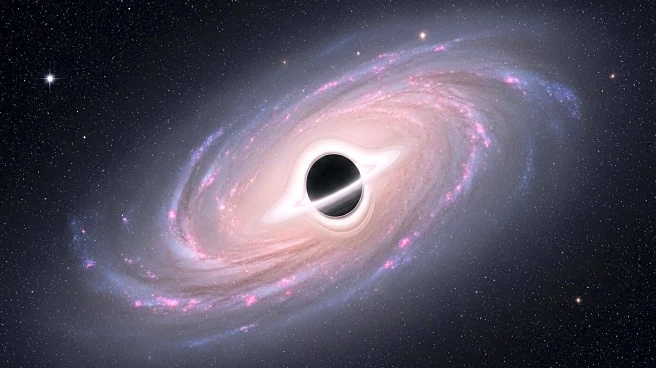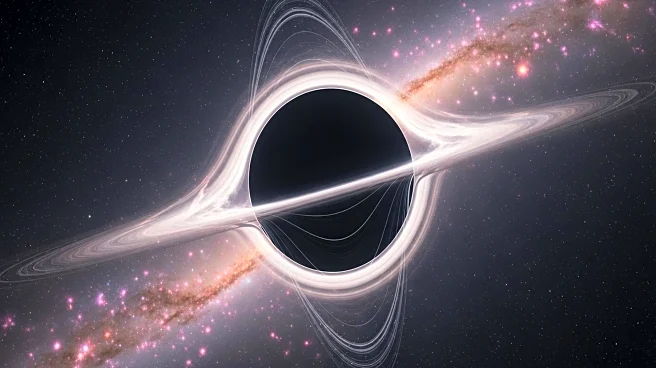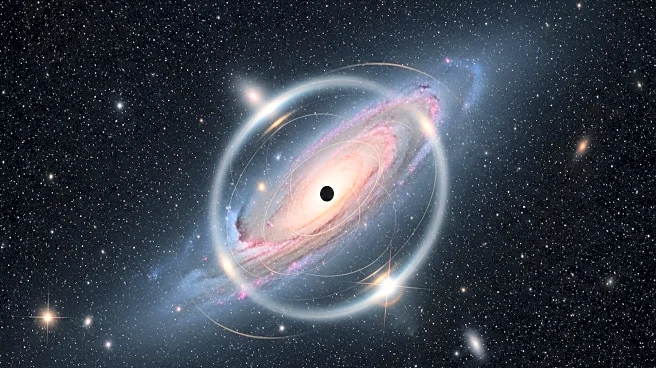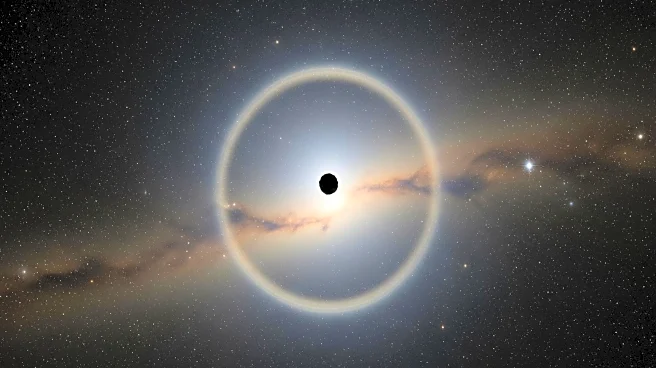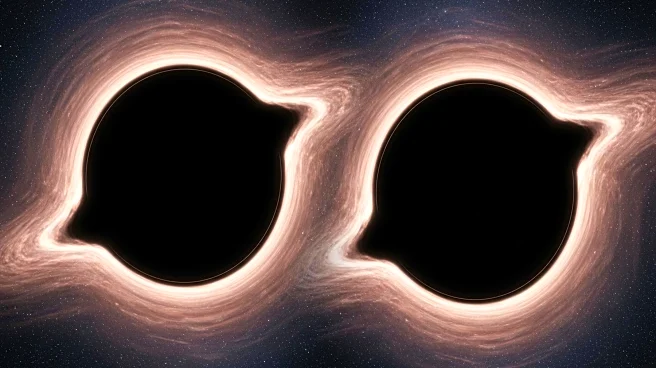What's Happening?
Astronomers have identified a mysterious object in deep space, weighing about one million times as much as the Sun. This discovery was made using a global array of telescopes, including the Green Bank Telescope in West Virginia and the Very Long Baseline Array in Hawai'i. The object, which does not emit light or detectable radiation, was identified through its gravitational influence on nearby light, a phenomenon known as gravitational lensing. The object could be a dense clump of dark matter or an inactive dwarf galaxy, and its detection represents the smallest dark object ever identified in the universe. This finding is significant as it could help refine or challenge existing theories about dark matter, which is believed to constitute roughly one-quarter of the universe.
Why It's Important?
The discovery of this object is crucial for understanding the nature of dark matter, a fundamental component of the universe that remains largely mysterious. Dark matter's gravitational effects are thought to influence the arrangement of galaxies and stars, and finding small, starless clumps could either support or challenge current theories. This detection, consistent with the 'cold dark matter theory,' could lead to further discoveries that refine our understanding of galaxy formation and the universe's structure. The research, supported by international collaborations, highlights the importance of global scientific efforts in unraveling cosmic mysteries.
What's Next?
Researchers are continuing to analyze data to better understand the nature of the discovered object and are searching for more such objects in other parts of the sky. The findings could lead to a reevaluation of dark matter theories if more objects are found, potentially impacting our understanding of cosmic evolution. The team aims to determine whether the number of such objects aligns with existing models, which could have significant implications for astrophysics.
Beyond the Headlines
This discovery raises questions about the fundamental nature of dark matter and its role in the universe. The ability to detect such small objects could lead to new insights into the invisible forces shaping cosmic structures. The research underscores the importance of international collaboration in advancing scientific knowledge and the potential for groundbreaking discoveries in the field of astrophysics.


